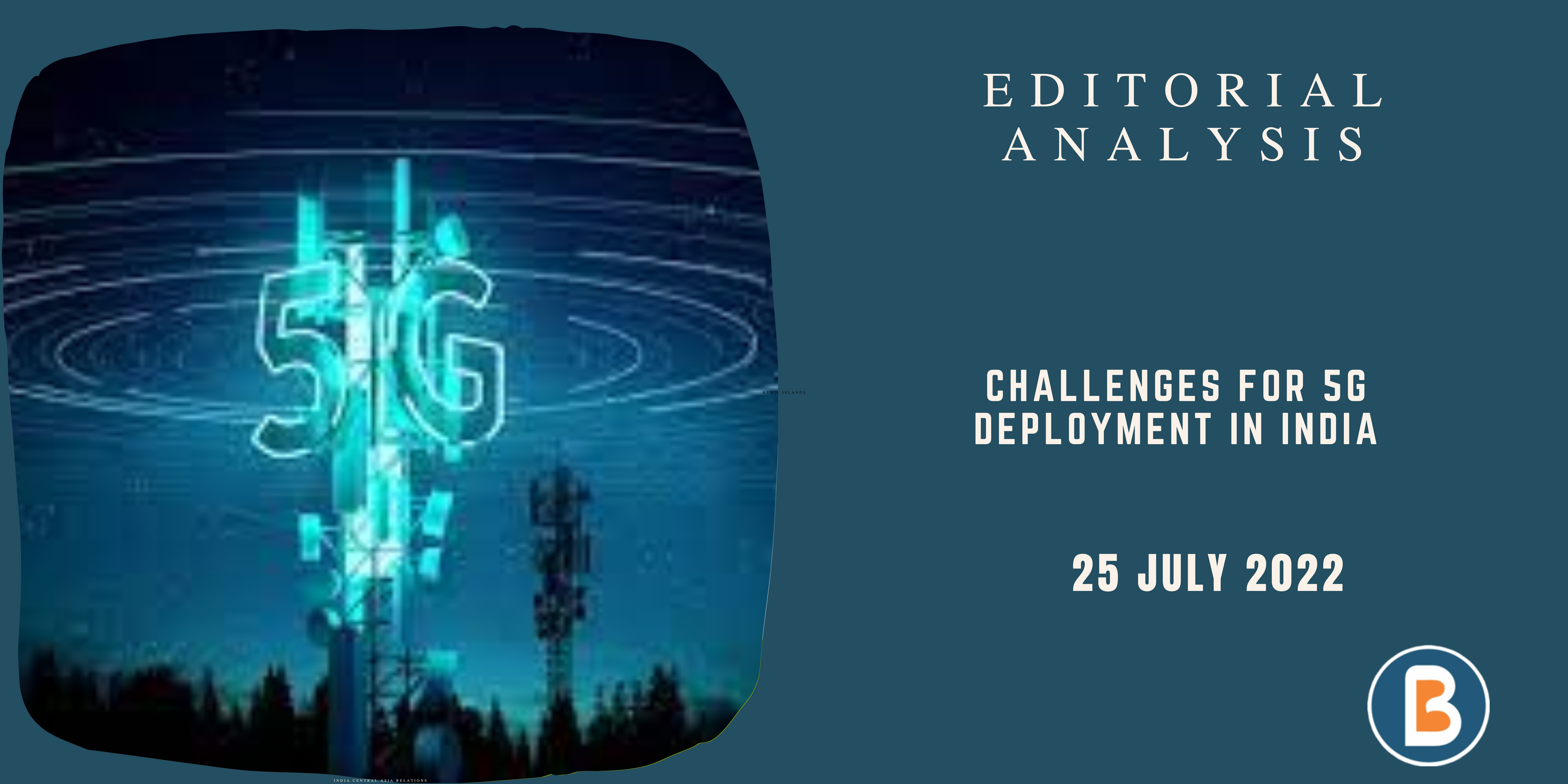Challenges for 5G Deployment in India
Context:
- India is preparing to auction off about 72 Ghz of airwaves to rollout 5G services in the country.
- However, the infrastructure needed for such a rollout requires existing radio towers to be connected via optical-fibre cables.
Background:
- Fiberisation involves the process of connecting radio towers with each other through optical fibre cables.
- It will enhance utilisation of network capacity, and carry large amounts of data once 5G services are rolled out.
- It will lead to additional bandwidth and stronger backhaul support.
- The backhaul is a component of the larger transport that is responsible for carrying data across the network. It represents the part of the network that connects the core of the network to the edge.
What is the status in India?
- Currently only 33% of the towers are fiberized in India when this is compared to some of the technologically advanced countries, it is very low.
- Even he fibre kilometer (fkm) per capita in India is quite low compared to than other key markets.
- Ideally, a country needs 1.3 km of fibre per capita to ensure good fiberisation. India’s fkm is just .09 compared to 1.35 in Japan, 1.34 in the U.S. and 1.3 in China.
Challenges Ahead:
- According to estimates by the National Broadband Mission and Cellular Operator Association of India (COAI) India requires about ₹2.2 lakh crore of investment to help fiberise 70% towers o reach the targeted level of fiberisation,
- To set up 15 lakh towers in the next four year about ₹2.5 lakh crore will be needed.
- Indian Prime Minister Narendra Modi, in his 2020 Independence Day speech, laid out the vision to connect every village in the country with optical fiber cable (OFC) in 1,000 days.
- To achieve that vision, cables must be laid at a speed of 1,251 km a day, around 3.6 times the current average speed of 350 km a day.
Source The Hindu
For more updates, Click Here




